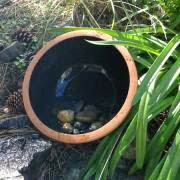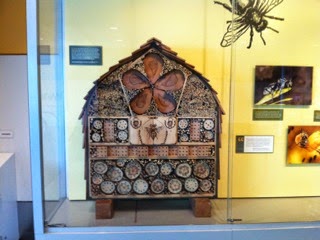Easy ways to help scientists with pollinators:
Citizen Science Projects
If you have never heard of citizen science it is simply process where every day people, who are not career scientist, assist and are involved in science as researchers (Conrad & Hilchey, 2011). This is a fun and easy way to help with the bee crisis and maybe learn a little as well!The selection of projects below are projects that focus on bees or pollinators. Please visit the project websites for more information.
Project Bumble Bee
Recent research indicates that additional species of bumble bees may
be in decline. Wild bumble bees face many threats including habitat
alteration, pesticide use, management practices, and pathogens. Recent
reports are troubling, but there is much you can do to help!
Bumble Bee Watch is a collaborative effort to track and conserve
North America’s bumble bees. This citizen science project allows for
individuals to:

Visit the Bumble Bee watch webpage to get started.
For more on bee conservation please read this guide:
http://www.xerces.org/wp-content/uploads/2012/06/conserving_bb.pdf
Retrieved from: http://www.bumblebeewatch.org/
What We Do
People all over the country are collecting data on pollinators in their yards, gardens, schools and parks. Together, we take counts of the number and types of pollinators visiting plants (especially sunflowers). We have been gathering information on pollinator service since 2008, and now have the largest single body of information about bee pollinator service in North America. Thanks to our thousands of observers, we can determine where pollinator service is strong or weak compared to averages.
Why It's Important
Over the past few years, scientific studies have suggested that both honey bee and native bee populations are in trouble. What we don't know is how this is affecting pollination of our gardens, crops and wild lands. In 2008, we started this project as a way to gather information about our urban, suburban and rural bee populations and to give you the tools to learn about what is happening with the pollinators in your yard.
How You Can Help
While we love to get data from our namesake species, Lemon Queen Sunflowers, you can participate by watching a plant and recording how many pollinators visit, or recording pollinators as you take your favorite hike!
Retrieved from: http://www.greatsunflower.org/
- Upload photos of bumble bees to start a virtual bumble bee collection
- Identify the bumble bees in your photos and have your identifications verified by experts
- Help researchers determine the status and conservation needs of bumble bees
- Help locate rare or endangered populations of bumble bees
- Learn about bumble bees, their ecology, and ongoing conservation efforts
- Connect with other citizen scientists.
Visit the Bumble Bee watch webpage to get started.
For more on bee conservation please read this guide:
http://www.xerces.org/wp-content/uploads/2012/06/conserving_bb.pdf
Retrieved from: http://www.bumblebeewatch.org/
Great Sunflower Project
People all over the country are collecting data on pollinators in their yards, gardens, schools and parks. Together, we take counts of the number and types of pollinators visiting plants (especially sunflowers). We have been gathering information on pollinator service since 2008, and now have the largest single body of information about bee pollinator service in North America. Thanks to our thousands of observers, we can determine where pollinator service is strong or weak compared to averages.
Why It's Important
Over the past few years, scientific studies have suggested that both honey bee and native bee populations are in trouble. What we don't know is how this is affecting pollination of our gardens, crops and wild lands. In 2008, we started this project as a way to gather information about our urban, suburban and rural bee populations and to give you the tools to learn about what is happening with the pollinators in your yard.
How You Can Help
While we love to get data from our namesake species, Lemon Queen Sunflowers, you can participate by watching a plant and recording how many pollinators visit, or recording pollinators as you take your favorite hike!
Retrieved from: http://www.greatsunflower.org/
Great Pollinator Habitat Challenge:
Starting in late March
Imagine what would happen if every home, school, playground, senior
center and park around the world, took one day each year to evaluate and
improve the pollinator habitat at their site. Together, we could
easily create hundreds of thousands of patches of pollinator friendly
habitat.
It just takes three steps:
It just takes three steps:
Evaluate
Take the Habitat assessment and make a plan to improve your pollinator habitat.
Take the Habitat assessment and make a plan to improve your pollinator habitat.
Act.
Take action on your plan and create better habitat.
Take action on your plan and create better habitat.
Share.
Retrieved from: http://www.greatsunflower.org/habitat challenge
BEESPOTTER
BeeSpotter is a partnership between citizen-scientists and the professional science community designed to educate
the public about pollinators by engaging them in a data collection effort of importance to the nation.
It is a web-based portal at the University of Illinois for learning about honey
bees and bumble bees and for contributing data to a nationwide effort to baseline information on population status
of these insects.
How you can help:
The best way to get involved is to get out there with your camera and capture some good pictures of bees!
We want to get a better idea of bee demographics in the state of Illinois, and we can't do it without your help.
In order to get your bee pictures on our website, just create an account
and then add your bee spotting.
Retrieved from: http://beespotter.mste.illinois.edu/
Build a Better Domicile Project
“Bumble Boosters: Building a Better Bumble Bee Domicile” is a citizen
science project, engaging public of all ages to experiment with,
disperse, collect data and collaborate with others about bumble bee
domicile designs. Participants are encouraged to research bumble bees in
order to design and test their own domicile designs.
It is assumed that a nest box that mimics an abandoned rodent den (a
cavity with insulation) will attract bumble bee queens and provide them a
place to nest. The more nesting sites available, the more chance for
bumble bee queens to establish a colony – more pollinators. Many
attempts have been made to design an effective artificial nesting
domicile.
Most designs and related research have found less than 10%
acceptance rate of domiciles. The good news is that YouTube and other
websites contain numerous reports of citizen scientists having good luck
attracting bumble bees to homemade nest boxes. What are these citizen
scientists doing to attract bumble bees? What in their nest box design
is attracting bumble bees? How do we take aspects of their designs and
build a better bumble bee nest box? These questions are something that
the Bumble Boosters project seeks to answer.
Retrieved from: http://bumbleboosters.unl.edu
Do you know of other pollinator friendly citizen science projects?
Do you participate in citizen science projects?
What else can you do to help our bees?
Feel free to comment below!
Conrad, C. C., & Hilchey, K. G. (2011). A review of citizen science
and community-based environmental monitoring: issues and opportunities. Environmental monitoring and assessment, 176 (1), 273–291.
Disclaimer: The project information in this post was retrieved by the websites listed below each project. The description, idea and content of each project is the property of the individual project managers and not of this blog. The purpose of the project lists is to encourage participation to help pollinators. This blog is not associated with any project list and is not paid to remote the projects.
Disclaimer: The project information in this post was retrieved by the websites listed below each project. The description, idea and content of each project is the property of the individual project managers and not of this blog. The purpose of the project lists is to encourage participation to help pollinators. This blog is not associated with any project list and is not paid to remote the projects.









